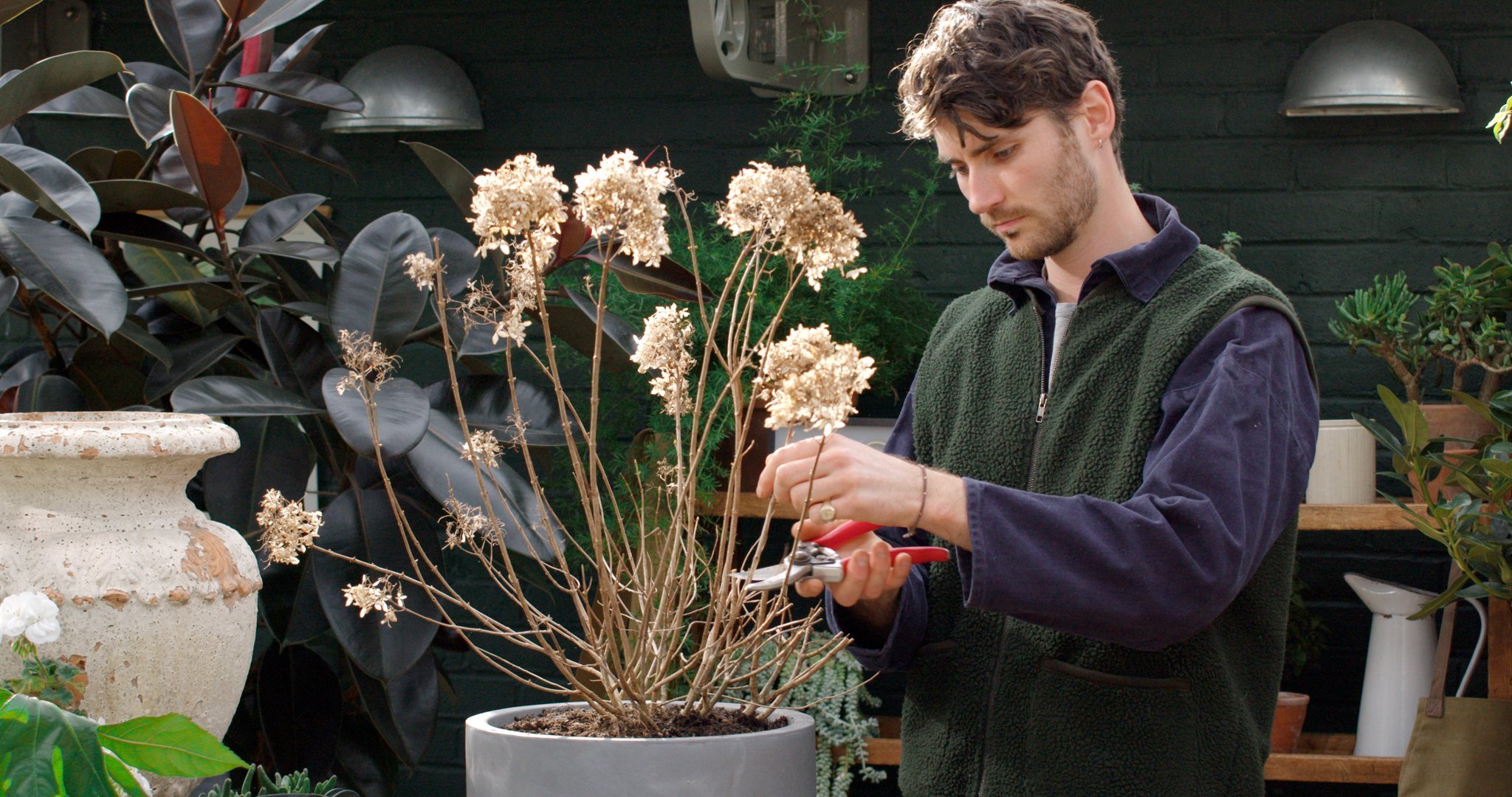
- J
- F
- M
- A
- M
- J
- J
- A
- S
- O
- N
- D
- J
- F
- M
- A
- M
- J
- J
- A
- S
- O
- N
- D
Height1-1,5m
Width1-1,5m

It reaches fullgrowth in 3-5 years
General care for Hydrangea Annabelle

Flower colour

Aspect

Cut back

Divide

Dead head

Feed
Seasonal guide to care for your
Hydrangea Annabelle
Hydrangea arborescens 'Annabelle,' commonly known as Hydrangea Annabelle, is a beautiful and hardy deciduous shrub known for its large, spherical white flower clusters.
To ensure the health and beauty of this plant throughout the year in the UK, it's crucial to provide detailed seasonal care that caters to its specific needs.
This guide offers comprehensive guidance on caring for Hydrangea arborescens 'Annabelle' throughout the seasons in the UK.
Spring

Pruning and Maintenance
In early spring, closely inspect your Annabelle. Start by removing any dead or damaged wood, paying special attention to branches that show no signs of new growth. Pruning back to where you see healthy buds or shoots emerging promotes vigorous growth. Prune the plant back two-thirds and ensure you cut 1/2 an inch to 1 inch above any new shoots or buds.
If your Annabelle Hydrangea has become overgrown or you want to rejuvenate it, you can consider more severe pruning, cutting it back to just a few inches above the ground. This hard pruning should be done every few years to encourage fresh, vigorous growth.

Feed
Adhere to your manufacturer's instructions for the appropriate dosage to support healthy growth and abundant blooms.

Watering
Hydrangea Annabelle prefers soil that is consistently moist but well-drained. Ensure that the soil remains consistently damp as the weather warms in spring. Deep watering is important to penetrate the root zone.
Summer

Pruning and Maintenance (if needed)
Remove spent flower heads and monitor the plant's shape. If the shrub becomes unruly or overly dense, consider selective pruning during early to mid-summer to maintain its desired form.

Mulching
Apply a 2 to 3-inch layer of organic mulch, such as well-rotted compost or leaf mould, around the base of the plant. Mulch helps to conserve moisture, stabilize soil temperature, and inhibit weed growth.

Watering
During the warmer months, consistent and deep watering is essential. Keep the soil consistently moist but not waterlogged.
Autumn

Pruning and Maintenance
As the growing season winds down, trim away any remaining dead or damaged wood, spent flower heads, and any weak or diseased growth. This autumn pruning helps tidy the plant and encourages healthy new growth next spring. This stage can also be done in spring if you would prefer some winter structure within the garden.

Protection from frost
Hydrangea Annabelle is hardy, but during particularly cold winters, you can provide extra protection by mulching the base of the plant with a layer of organic mulch. This helps insulate the roots from harsh winter conditions.
Winter
Pest and disease prevention
While pests and diseases are less active in winter, monitor your Annabelle Hydrangea for any signs of issues and address them promptly to prevent further damage.

Plant SOS
Some common plant health concerns surrounding Hydrangea Annabelle and potential solutions include;
Drooping and/or dried leaves - This is often due to underwatering. Ensure the soil is consistently moist but well-drained. Deep watering is important to penetrate the root zone.
Yellowing leaves and dry flowerheads - Hydrangeas lose their leaves in the autumn. The yellowing of leaves and the drying of the flowerheads is part of the seasonal cycle of the plant.
Small holes in leaves - A sign of slugs and snails. Consider using a deterrent around the base of the plant such as Slug & Snail Repellant or Slug & Snail Control



























